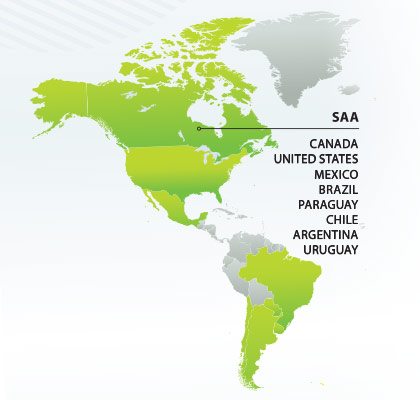SAA Spearheads Priority Working Groups
As the Seed Association of the Americas pushes to ease the movement of seed between countries, more member engagement is needed.
Members of the Seed Association of the Americas (SAA) met the first week of May in Buenos Aires, Argentina, to address four priority issues — biotechnology, intellectual property, seed treatment and phytosanitary requirements.
|
Diego Risso, SAA secretary general |
To better address the priority areas, SAA formed four working groups. “We are working to strengthen each of these working groups and increasing communication within for improved preparedness,” says Diego Risso, SAA secretary general. “SAA connects with all the regulators in the Americas and is the forum for those in the seed industry to address their concerns.”
Regarding biotechnology, SAA members had proactive discussions in order to update their LLP position paper. Risso reports that the SAA team is working closely with the Southern Agricultural Council, known as CAS, and the North American Biotech Initiative to address low-level presence issues. Risso says the working group is learning about the adoption level of new breeding techniques and how regulations are being proposed in Argentina, Brazil, Canada, Chile, Mexico, Paraguay, Peru, United States and Uruguay.
“One of our biggest concerns is that seed treatment might become a trade barrier,” says Jerry Monk, SAA president. “To best address this, we are developing two databases, one that compiles and answers the most frequently asked questions and the other to serve as a resource of all the seed applied products and relevant product information.”
To help address concerns regarding intellectual property, the working group drafted goals and an action plan during its May meeting. SAA also encourages all member countries to adopt UPOV 91 because it’s one of the best protection systems for IP.
Risso also reports that the phytosanitary working group strives to speed up the pest risk analysis process, as that’s a major bottleneck and can take anywhere from months to several years to be completed.
“We continue to improve our communications with national regulators and strive to bring all parties around the table to develop solutions to trade barriers,” Risso explains. “SAA is unique in its ability to bring governments, regulators and seed industry representatives together to discuss and move forward issues of importance.
“If you or your company want to get involved in working to find solutions to these challenges, we welcome your participation. All you need to do is be a member of your national seed association and ask to join the SAA discussions. The more participation we have, the better the seed industry will be.”
Julie Deering













